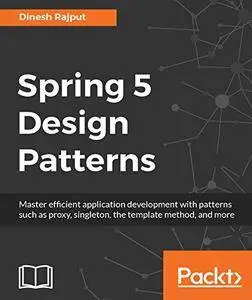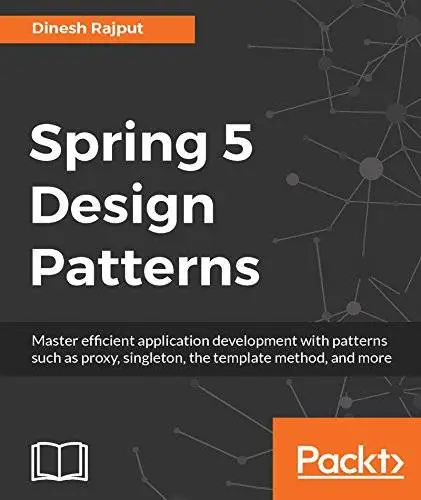Spring 5 Design Patterns: Master efficient application development with patterns such as proxy, singleton, the template method, and more by Dinesh Rajput
English | 6 Oct. 2017 | ISBN: 1788299450 | ASIN: B075F67NWP | 396 Pages | AZW3 | 3.34 MB
English | 6 Oct. 2017 | ISBN: 1788299450 | ASIN: B075F67NWP | 396 Pages | AZW3 | 3.34 MB
Key Features
Explore best practices for designing an application
Manage your code easily with Spring's Dependency Injection pattern
Understand the benefits that the right design patterns can offer your toolkit
Book Description
Design patterns help speed up the development process by offering well tested and proven solutions to common problems. These patterns coupled with the Spring framework offer tremendous improvements in the development process.
The book begins with an overview of Spring Framework 5.0 and design patterns. You will understand the Dependency Injection pattern, which is the main principle behind the decoupling process that Spring performs, thus making it easier to manage your code. You will learn how GoF patterns can be used in Application Design. You will then learn to use Proxy patterns in Aspect Oriented Programming and remoting. Moving on, you will understand the JDBC template patterns and their use in abstracting database access. Then, you will be introduced to MVC patterns to build Reactive web applications. Finally, you will move on to more advanced topics such as Reactive streams and Concurrency.
At the end of this book, you will be well equipped to develop efficient enterprise applications using Spring 5 with common design patterns
What you will learn
Develop applications using dependency injection patterns
Learn best practices to design enterprise applications
Explore Aspect-Oriented Programming relating to transactions, security, and caching.
Build web applications using traditional Spring MVC patterns
Learn to configure Spring using XML, annotations, and Java.
Implement caching to improve application performance.
Understand concurrency and handle multiple connections inside a web server.
Utilizing Reactive Programming Pattern to build Reactive web applications.
About the Author
Dinesh Rajput is the chief editor of a website Dineshonjava, a technical blog dedicated to the Spring and Java technologies. It has a series of articles related to Java technologies. Dinesh has been a Spring enthusiast since 2008 and is a Pivotal Certified Spring Professional, an author, and a blogger. He has more than 10 years of experience with different aspects of Spring and Java design and development. His core expertise lies in the latest version of Spring Framework, Spring Boot, Spring Security, creating REST APIs, Microservice Architecture, Reactive Pattern, Spring AOP, Design Patterns, Struts, Hibernate, Web Services, Spring Batch, Cassandra, MongoDB, and Web Application Design and Architecture.
Table of Contents
Overview of Spring Framework 5.0 and Used Design Patterns
Best Practices with Consideration of Patterns for Spring Application
Consideration of Structural and Behavioural Patterns into Spring
Wiring beans using Dependency Injection Pattern
Understanding Bean Life cycle and Used Patterns
Spring Aspect Oriented Programming with Proxy Pattern
Accessing Database with spring and JDBC template patterns
Accessing Database with spring and ORM template patterns
Improving performance of Application using Caching patterns
Implementing MVC pattern in a Web Application with Spring
Using Reactive Pattern in Programming
Implementing Concurrency Patterns



